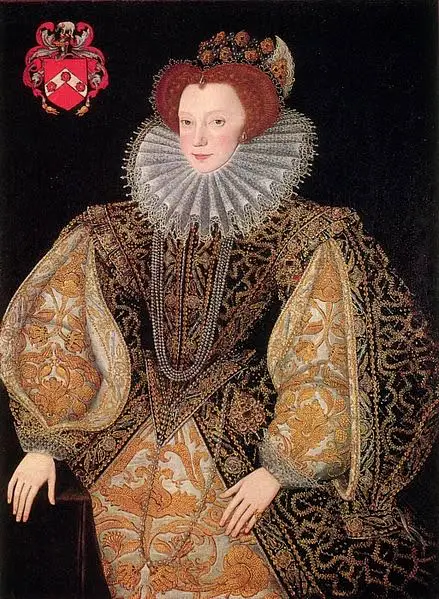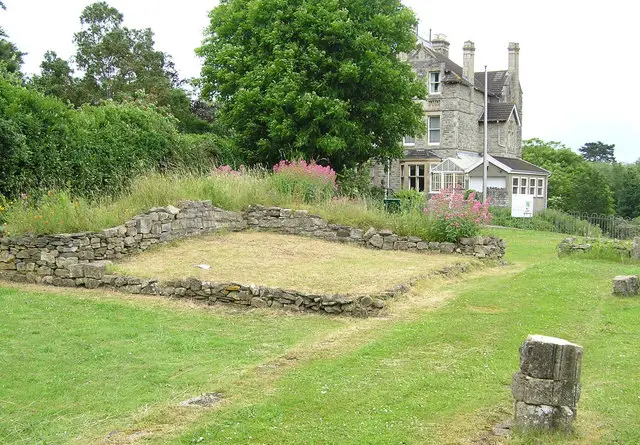 Marguerite de Navarre, also known as Marguerite d'Angoulême, was born on 11 April 1492 and died on 21 December 1549. She was sister to Francis I of France and queen consort of Henri II of Navarre. Most importantly, Marguerite was a brilliant mind and an author.
Marguerite de Navarre, also known as Marguerite d'Angoulême, was born on 11 April 1492 and died on 21 December 1549. She was sister to Francis I of France and queen consort of Henri II of Navarre. Most importantly, Marguerite was a brilliant mind and an author.
Marguerite's early life was spent in Cognac and Blois, and was joined by her little brother, the future Francis I of France, in 1494. Sadly, Marguerite's father, Charles d'Angoulême, passed away in 1494. Much the benefit of the precocious Marguerite, her mother was now head of the household and saw to it that her daughter received a proper education. Marguerite enjoyed learning about classical philosophy and also spent time carefully reading the Bible. This early intellectual training prepared Marguerite for deep, concerted critical thinking, which later enabled her in her literary career.
Marguerite was married twice; first in October 1509 when she married the kind but simple Charles, Duke of Alençon. He left her a widow in 1525. Marguerite married for the second time in 1527. She married Henri d'Albret, King of Navarre. With Henri, Marguerite welcomed her only surviving child, Jeanne d'Albret in November 1528. The couple did welcome a son Jean in July 1530, only for the infant to pass away on Christmas Day, 1530. It is possible that Marguerite's sorrow from the death of her baby boy led to Marguerite writing, Miroir de l’âme pécheresse, or "Mirror of the Sinful Soul", in 1531. Interestingly, Anne Boleyn and Elizabeth I of England both had ties to Marguerite. It is possible that Anne spent time with Marguerite, even at Marguerite's court. Many years later, in 1548, Elizabeth I translated Miroir de l’âme pécheresse, which she called "A Godly Meditation of the Soul" or "The Glass of the Sinful Soul".
Miroir de l’âme pécheresse is, here described in too-simple terms, a lengthy verse wherein the speaker declares herself a wretch unworthy of God's love, drawing parallels between herself and biblical characters, including a mother whose baby died when presented to King Solomon. In each tale, the speaker is returned to God's grace at the end.
Two more works by Marguerite were published posthumously, namely Heptaméron in 1558 or 1559, and Le Navire, a bit of poetry that was not compiled and published until 1896. The Heptaméron was written in a style very similar to Boccacio's Decameron, in that it is a group of tales about travellers returning from a Pyrenean spa; they are delayed by a flood. Marguerite's book was intended to have one hundred tales, but she only completed seventy-two. Boccacio's Decameron follows ten young Florentines as they try to escape the plague; they stay in a fictional villa and each one of the ten Florentines tells a story for ten days.
Marguerite embraced the concepts of humanism and supported reform within the Roman Catholic Church, though she was not a Calvinist. However, Marguerite maintained correspondence and a personal relationship with Marie Dentière of Geneva, who sent Marguerite her Epistre tres utile in 1539 as a response to Marguerite's inquiry about the expulsion of John Calvin and others from Geneva. Epistre tres utile is also called the Epistle to Marguerite of Navarre. Marie Dentière was commonly known as a French Protestant. Marguerite actively tried to prevent her brother Francis I from taking action against the Protestant movement while she was alive, as well.
Marguerite was a patron of the arts, too, and known to protect and sponsor the likes of Clément Marot, Claude de Bectoz, François Rabelais and Pierre de Ronsard. The French philosopher Pierre Bayle stated the admiration for Marguerite best when he said, "... for a queen to grant her protection to people persecuted for opinions which she believes to be false; to open a sanctuary to them; to preserve them from the flames prepared for them; to furnish them with a subsistence; liberally to relieve the troubles and inconveniences of their exile, is a heroic magnanimity which has hardly any precedent ..."
Marguerite, Renaissance Queen, left her mark not only on the courts of France and England, but on the entire world. Her intelligence and writings still captivate a large audience and provide a glimpse not only into an exceptional mind, but also into the Reformation.
Sources and Suggested Reading
- “Margaret of Angoulême”. http://www.britannica.com/biography/Margaret-of-Angouleme Retrieved 11 December 2015.
- “Marguerite, Queen of Navarre.” http://departments.kings.edu/womens_history/margueritN.html Retrieved 11 December 2015.
- “Charles d’Angoulême.” http://gw.geneanet.org/garric?lang=fr&p=charles&n=d+angouleme
- Putnam, Samuel. Marguerite of Navarre. (New York: Grosset & Dunlap, 1936).
- Boccacio, Giovanni. Decameron.
- Snyder, Susan. “Guilty Sisters: Marguerite de Navarre, Elizabeth of England, and the Miroir de l'ame pecheresse.” (Shakespeare Studies: 2000). http://freessays.0catch.com/lizsnyder.html Retrieved 14 December 2015.
- Ed. and translated by McKinley, Mary B. Dentière, Marie. Epistle to Marguerite de Navarre and Preface to a Sermon by John Calvin. (Chicago: The University of Chicago Press, 2004).
- Navarre, Marguerite. Le Miroir de l’âme pécheresse.



“Francis I married Claude, the sister of Marguerite’s first husband.”
This can’t be right – Claude and her sister Renee were the only surviving children of Louis XII and Anne of Brittany. If there had been a brother, he would have become king of France instead of Francis I.
So who exactly was Charles, Duke of Alençon?
I hadn’t spotted that mistake, thanks Ceri. Yes, you’re correct, Claude and Renee were Louis’ only surviving children and there was no brother. Charles of Alençon was the son of René of Alençon and the Margaret of Vaudémont (also known as Margaret of Lorraine). He was a very powerful man.
Thanks Claire. I was a bit puzzled by that one.
Article très intéressant , c’est un plaisir de vous lire..
j’apprécie beaucoup votre site internet